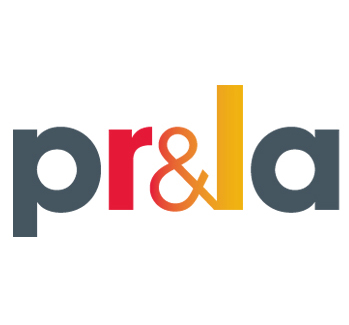The lodging industry in the United States and throughout the world is in the midst of an epic downturn. The emergence of COVID-19 in late 2019 in China took hold in the U.S. in early March. The policy response that ensued led to a contraction in overall economic activity; a severe decline in lodging demand followed. This has been exacerbated by the need for social distancing and sheltering in place and, implicitly, not traveling. My former colleagues at CBRE Hotels Research recently estimated that Revenue per Available Room (RevPAR) in the U.S. will decline 46 percent in 2020, with a contraction of almost 80 percent in Q2 alone.
Oxford Economics recently noted that the current situation is significantly different from the last two shocks to the American economy (the terrorist attacks of September 11, 2001, which resulted in a massive shock to the nation’s confidence; and, the financial market shock that resulted in unprecedented levels of liquidity and credit stress in 2008–2009). COVID-19 represents a natural disaster that occurred very suddenly and unexpectedly. Kalibri Labs is closely monitoring the speed and severity of the impact on the lodging industry (KalibriLabs.com—COVID 19 Industry Health Dashboard).
So where is the hotel industry in the U.S. headed? The reality is that nobody knows; and no one can know until this current episode is history. That being said, it is well understood that changes in the demand for overnight accommodations are closely linked to changes in the economy. Declines in personal income and employment have already contracted at record levels since early March, and these losses are expected to continue in the near term. The consensus opinion from a panel of economists polled by the Wall Street Journal in mid-April 2020 calls for a 4.9 percent decline in gross domestic product (GDP) this year. Encouragingly, this same panel expects GDP to begin expanding once again in the back-half of 2020 and to increase by 5.1 percent in 2021. Should these estimates become reality, lodging demand growth will return. Recent analyses from CBRE Hotels Americas Research indicated that the firm expects the 2023 U.S. RevPAR level to slightly exceed the STR reported 2019 of $86.73.
What are the Known Unknowns?
The job of forecasting today carries the additional risk of allowing for the unprecedented nature of the COVID-19 pandemic relative to modern history. Questions that can only be answered through the passage of time include:
- How quickly do the states and municipalities “re-open” for business by loosening shelter-at-home restrictions?
- To what degree will businesses and consumers, in an abundance of caution, remain closed or stay at home, thus delaying the economic benefit that will come from greater levels of commerce?
- At what rates will airlines begin to add back load capacity? When will inbound international travel return (this is a particularly critical question for hoteliers in America’s gateway cities)?
- A recent study from McKinsey & Company addressed the future of America’s cities as we know them. It also raised questions on how they survive COVID-19. “Americans have long had a romance with big cities. But the 100 U.S. counties most affected by the coronavirus account for 51 percent of the country’s GDP and 44 percent of jobs—and they are mostly metropolitan areas. What makes them economic powerhouses also increases their susceptibility to the virus: global networks, international travelers, dense populations. Mayors do not know when they will reopen, and many believe one of the last restrictions they will lift will be on the large-scale sporting events that powerfully contribute to urban economies and identities.”
- Will social distancing protocols adopted to mitigate the spread of the virus become permanent behaviors? If yes, the implications for facility design/re-design will likely be significant and reduced levels of productivity will be the result (i.e. minimum spacing between tables results in reduced seating capacity; revenue per square foot potential is lowered as a result).
- Group meetings, conventions, conferences, and trade shows, by design, involve large numbers of people congregating in open spaces for protracted periods of time. Will health concerns keep these types of travelers at home? The same is true for those leisure destinations dominated by theme parks and other tourist-oriented venues.
- What will be the ultimate effectiveness of the federal response to the COVID-19 virus in terms of financial remediation? While some households and small businesses will benefit and survive, bankruptcies and foreclosures are likely to increase dramatically. These outcomes represent a potentially significant drag on the rate and pace of economic recovery.
- Anecdotal evidence has begun to surface that some recently enacted programs to assist unemployed workers, because of the value of their benefits, are incented to remain out of work. Understanding that the cost of labor for the typical U.S. hotel represents 40–50 percent of all operating expenses, this is a significant issue for hotel owners.
These are but a few of the known unknowns that make predicting the shape and path of recovery particularly challenging.
Some Initial Observations
- Data from STR through mid-April 2020 indicate that the deep declines in occupancy, average daily rate, and RevPAR levels seem to be stabilizing—an important first step on the road to recovery.
- The impact of the COVID-19 virus has been much worse in urban and resort locations. This is not surprising given densities in the former and the group meeting and leisure nature of the latter.
- Hotels located along America’s Interstate highways and in more rural areas, so far, have been impacted less than what has been seen in the larger markets. In general, the COVID-19 virus has been less evident in these areas.
- CBRE Hotels Research recently noted that the early days of the pandemic has revealed a significant volume of what can be considered essential hotel demand. This includes short and long-term housing, construction crews, airline employees, and contract workers, stays related to the healthcare industry (workers, patients, and their families), students, and people self-quarantining away from their family.
- Non-group-oriented hotels in leisure destinations within four-to-six-hour drive distance from major population centers, along with corporate transient lodgings, are expected to be the initial beneficiaries of recovering markets. The opposite will be true for those hotels and markets that appeal to international and group demand. These trends were observed during the post 9/11 recovery period.
- Not surprisingly, luxury, upper upscale, and upscale properties are being impacted the most. These higher-priced lodgings are much more dependent on group, business, and international visitors. The opposite is true for those hotels offering lower-priced alternatives. Importantly, higher-priced properties had a much stronger recovery both after 9/11, as well as after the Great Financial Crises—this same pattern of recovery should hold true this time around.
To note that these are trying times for virtually all lodging industry participants is an apostle of the obvious, both domestically and around the globe. The gradual re-opening of state and local economies that has begun in the U.S. will be the next key indicator that will inform our thinking as to the character of the road to recovery that lies ahead. •











